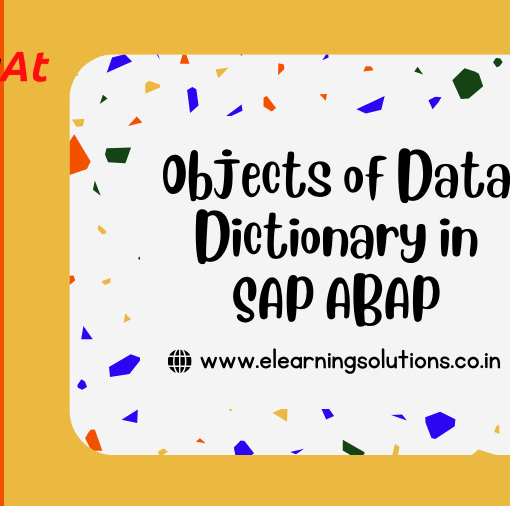Agriculture and horticulture have long been the cornerstones of any nation’s economy. SAP in agriculture sector the same industry today encompasses dairy farms, fruit cultivation, forestry, beekeeping, poultry, and poultry farming in addition to crops and food production. To have an influence with farming, the horticulture and agriculture industries need a variety of instruments and methods. SAP in agriculture sector a few of the current agriculture industry’s major pain points include crop quality maintenance with suitable soil conditions, management with effective fertilizers and manures, promotion, and crop processing. The solution that enables better control of your company activities for a farming unit will be integrated by SAP Products.
A complete, integrated business solution, the SAP Farm Management by Vistex module was created exclusively for agro-industrial businesses and to handle the whole life cycle of farm activities. SAP Farm Management by Vistex covers the crop life cycle, compliance, and harvest operations and offers vital data and analytics. Its toolset enables effective day-to-day management and satisfies the needs of senior managers. No agriculture software improves operational efficiency as effectively, brings field and management closer together, or offers as much commercial intelligence.
SAP Farm Management by Vistex, which is integrated into SAP ERP, centralizes data execution from the several agricultural operations and automatically generates controlling, quality, planning, and maintenance data. Through the interpretation of real-time synced data, SAP Farm Management by Vistex, which eliminates the ongoing obstacle of expensive and inaccurate data entry, enables management to set shared objectives and create a shared vision while boosting end-user productivity.
SAP’s effects on the agriculture and horticulture industries(SAP in Agriculture Sector)
- The implementation of SAP in real time will enable a data exchange system, resulting in a positive cycle of processes throughout your company.
- With the aid of numerous capabilities included in the SAP system, such as bank reconciliation, budgeting, and various currencies management, businesses may operate more productively and efficiently while concentrating on accounting and financial management.
- In addition to historical data and order data, demand-based forecasting may also be forecasted with the help of the MRP wizard. Such automated computations and demand predictions can readily be visualized for decision-making.
- SAP in agriculture sector may be used to manage vendor and supplier-related tasks with ease.
- The SAP system includes a customer relationship management component that will provide you full control over your company’s profitability, loyalty, and acquisition of new customers.
- For controlling business tasks like marketing, sales, purchase, and service, the entire life cycle is visible from beginning to end.
- The life cycle of material contracts, including price and other terms, is controlled with ease.
- Utilizing a platform to manage inventory and business performance can help businesses develop.
- In SAP, you may define alternative goods, group price lists, do cycle counts, generate open sales orders in list form, and manage inventory drop and increase adjustments and amendments.
- The SAP mobile combined platform will enable faster customer delivery and sales cycle processing in a shorter amount of time.
- Regular analysis will enable you to conduct profit and cost analyses and to provide comparative reports for all the operational business activities.
- Financial, third-party software, reporting documentation, and workflow management will all be integrated with simplicity.
Features
- Identify the productive area, the sugar cane variety, the crop cycle (ratoon, stubble, complete cycle), and the crop season for effective field management.
- Run simulations to determine the operating budget and data, taking into account the field, the tasks, and the anticipated harvest and planting dates.
- Utilize master records, scheduling, and unforeseen jobs to manage field task plans.
- Set each field’s hydric balance calculation parameters.
- Control the application of agricultural chemicals for appropriate dosage, compatibility, and regional limits.
- Create costing models using SAP that take into account indirect costs, amortizations, supply-related consumption, services, and hours worked by human and machine.
- Record activities and resource usage either in total or in detail (accomplishment sheet), taking specified units per task into consideration.
- Identify the personnel and equipment required for carrying out agricultural procedures.
Benefits
SAP (Systems, Applications, and Products) offers several benefits to the agriculture sector, helping farmers, agribusinesses, and other stakeholders in improving operational efficiency, enhance decision-making processes, and optimizing overall productivity. Here are some key benefits of SAP in the agriculture sector:
- Streamlined Farm Management: SAP provides comprehensive farm management solutions that integrate various processes such as crop planning, inventory management, land mapping, resource allocation, and labor management. This streamlines operations reduces manual work, and improves productivity.
- Enhanced Supply Chain Management: SAP helps optimize the supply chain in agriculture by enabling better visibility and control over the movement of goods, from farm to market. It facilitates real-time tracking, inventory management, demand forecasting, and logistics optimization, resulting in reduced waste, improved quality, and timely delivery.
- Improved Decision Making: SAP’s data analytics and reporting capabilities enable farmers and agribusinesses to gather and analyze data from various sources, such as weather patterns, soil conditions, market trends, and historical data. This information empowers decision-makers to make data-driven choices, optimize resource allocation, mitigate risks, and improve yields.
- Precision Agriculture: SAP solutions support precision agriculture practices by integrating technologies like GPS, remote sensing, and IoT devices. This allows farmers to monitor crop health, optimize irrigation and fertilization, detect pests and diseases, and perform targeted interventions. Precision agriculture helps reduce input costs, optimize resource usage, and minimize environmental impact.
- Financial Management: SAP offers financial management modules tailored to the agriculture sector, enabling farmers and agribusinesses to manage budgets, track expenses, and analyze profitability. These tools facilitate accurate cost accounting, financial planning, and compliance with regulatory requirements.
- Compliance and Sustainability: SAP solutions assist agricultural businesses in managing regulatory compliance and sustainability practices. They provide tools for tracking and reporting on environmental impacts, monitoring pesticide and fertilizer usage, ensuring food safety, and adhering to labor and traceability regulations.
- Collaboration and Integration: SAP platforms enable seamless collaboration and integration across different stakeholders in the agriculture value chain, including farmers, suppliers, distributors, and retailers. This facilitates data sharing, coordinated planning, and efficient coordination, leading to improved supply chain efficiency and customer satisfaction.
- Mobile and Cloud Capabilities: SAP’s mobile and cloud solutions enable farmers to access critical information and perform tasks from anywhere, using mobile devices. This flexibility enhances agility, facilitates real-time decision-making, and improves operational efficiency, even in remote or resource-constrained areas.
- Data Security and Privacy: SAP prioritizes data security and privacy, ensuring that sensitive information about crops, farmers, and the supply chain is protected. Robust security measures, data encryption, and user access controls are implemented to safeguard valuable agricultural data.





